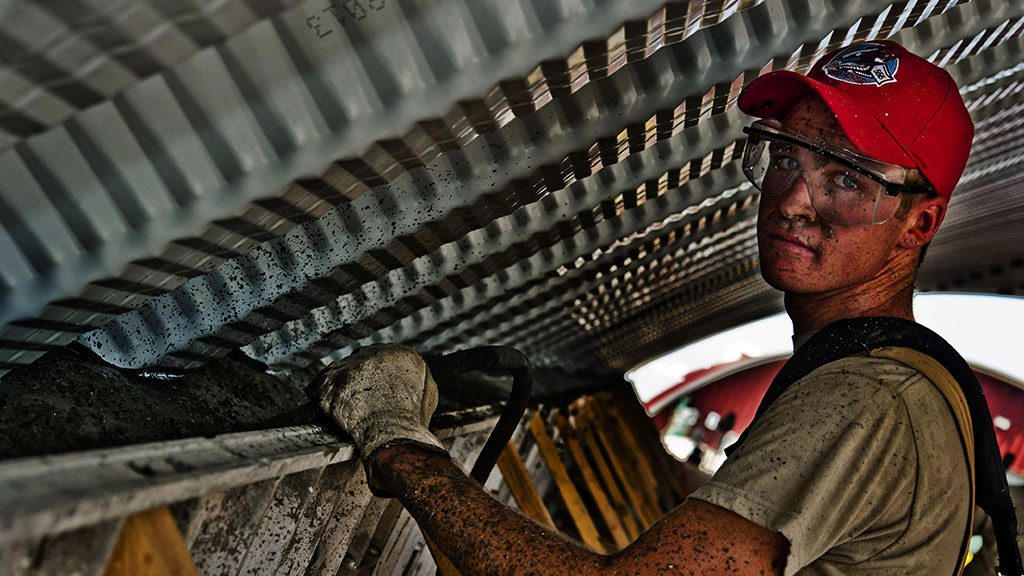Dr. Linda Goldenhar, an expert in the safety culture and climate of construction workplaces, was in Toronto recently to discuss the research that led her team to develop a workbook to help strengthen jobsite safety and an online tool that assesses a workplace’s safety climate maturity.
Goldenhar, director of research and evaluation at the Center for Construction Research and Training (formerly the Center to Protect Workers’ Rights (CPWR)) in Silver Spring, Md., gave the 2017 Alf Nachemson Memorial Lecture, titled High-hazard industries: Addressing safety culture, climate and leadership to improve outcomes, at Toronto’s Design Exchange last month. The talk was presented by the Institute for Work and Health.
Her research on safety climate and safety culture began in 2012. There seemed to be a lack of agreement on whether safety climate and safety culture were the same or different things, how best to measure those constructs and, most importantly, what can be done to improve and strengthen them, Goldenhar explained.
In 2013, 70 stakeholders were invited to attend a workshop on safety culture and climate. Goldenhar reported an agreement was reached by participants that the definition of safety culture is “the unspoken espoused safety related beliefs attitudes and values that interact with an organization’s systems, peoples and practices to establish norms about how safety is done in that organization,” and that safety climate is “the employees perception of the consistency between those espoused beliefs, attitudes and values that the company says or writes about and what is actually done out in practice out on the jobsite.”
“Workshop attendees also concluded that compared to safety culture, safety climate would likely be more amenable to change, so that’s where we’ve been focusing our efforts. Some of the products we’ve been working on help companies do that,” said Goldenhar.
Uur real primary objective was to get OSHA to incorporate it into its 30-hour (construction training) course,
— Dr. Linda Goldenhar
Center for Construction Research and Training
Stakeholders also discussed what they thought the critical leading indicators were of safety climate and how they can be measured and improved.
“Focusing on leading indicators helps us be proactive and think about ways to prevent adverse outcomes rather than being reactive after the fact, trying to fix things after we learn about things like these lagging indicators such as injuries, illnesses and workers’ comp claims,” said Goldenhar.
Attendees agreed there were eight key leading indicators of a strong and positive jobsite safety climate in construction: demonstrating management commitment; aligning and integrating safety as a value; ensuring accountability at all levels; improving supervisory leadership; empowering and involving employees; improving communication; training at all levels; and encouraging owner and client involvement.
Participants asked the CPWR to develop a practical tool they could use based on the workshop findings and in 2014 a workbook was created (updated in 2016) called Worksheets and a Rating Tool to Help You Strengthen Jobsite Safety Climate.
“A company can go through each of these rubrics, one for each of the indicators, and get a sense for where their company falls in terms of safety climate maturity on the rubric scale,” said Goldenhar, adding going the rubric route gives people a more actionable idea of what they can do to move up the scale.
Dr. Tahira Probst from Washington State University and Goldenhar then created the Safety Climate Assessment Tool (S-CAT). According to the S-CAT website, the tool gives companies and workers the opportunity to learn more about the eight leading indicators of jobsite safety climate; get a tailored report about their own jobsite safety climate maturity based on their answers; and includes ideas for strengthening each of the eight leading indicators. The report also lets individuals and companies compare their level of safety climate maturity to other construction companies.
“So far there has been 1,400 responses in the S-CAT database, with a little over half from the construction sector,” Goldenhar reported.
Most recently, Goldenhar and her team received funding to develop a training module designed to give foremen and other workers leadership skills they can use on the jobsite to improve safety climate and safety outcomes.
“We wanted the final product to be such that both large and small companies could use it, trade unions could use it and incorporate it into their ongoing foreman training. But our real primary objective was to get OSHA (the Occupational Safety and Health Administration) to incorporate it into its 30-hour (construction training) course,” explained Goldenhar.
A curriculum development team worked together to deliver a training module called the Foundations for Safety Leadership (FSL). It was formally released by the OSHA as a 30-hour elective module in January.
“I’m happy to report that lots of large and small companies have been training their foreman on FSL and a number of trade unions have incorporated it into their foreman training,” Goldenhar said.











Recent Comments
comments for this post are closed